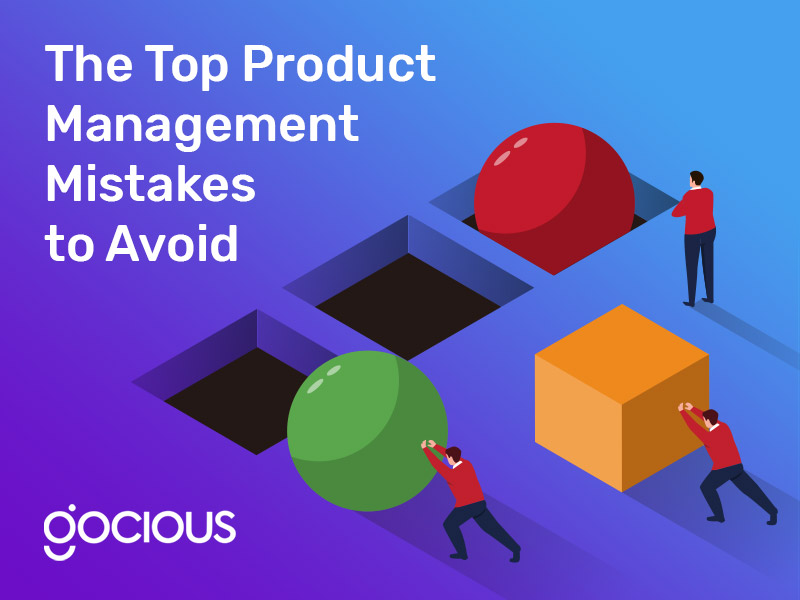
Subscribe to our blog
Ready to improve your roadmapping process?
Curious about how Gocious can help your manufacturing team transform its Product Lifecycle Management strategy? Let’s schedule a call to explore!
Product Management Articles
Maziar Adl

Recent Posts
The Easiest Way to Improve Communication Within Product Management Teams
It's not a secret that effective, timely communication is one of the greatest assets in a corporation, especially manufacturing. Some individuals seem gifted with a natural talent for communicating well with everyone. But even the best communicators will struggle when they don't have the right tools to use. By contrast, less skilled communicators can become more effective with communication when they have the right tools at their fingertips and established processes that make it easy.
How Product Roadmapping Software Supports the Top Trends in the Automotive Manufacturing Industry
The is a great example of a sector that has needed to pivot regularly to meet the demand of consumers. From fuel efficiency to safety features to high-tech solutions, the companies that dominate the market have successfully redefined their brands and introduced relevant models that meet modern needs. While modes of travel in the future may have endless possibilities, the demand for vehicles is here to stay.
The Primary Reason Product Managers Need Product Roadmap Management Software
There are many resources that a product manager can use daily. A lot of the time PMs will struggle with complicated spreadsheets attempting to organize data, which is not only an added complication for PMs but also for teams as well as stakeholders. However, there are tools that can solve this problem.
How to Overcome 7 Common Challenges in Global Product Management
It's no secret that developing products come with many challenges. Some of them are unpredictable, while others can be avoided with better planning and preparations. Issues often arise from internal factors, including miscommunication, information silos, and differing opinions. Some issues occur due to external factors, such as supply shortages or market demands.
What Every Product Manager In Manufacturing Industry Needs to Succeed
Product managers are essential figures in the product development process whether the product is hardware or software. It is their job to understand the vision of the company and translate it into a product plan through which the business goals can be realized.
The Top Product Management Mistakes to Avoid
Every job has its challenges, and product management is no exception. Keeping a list of teams working together towards the same goals in a range of products means there is ample room for mistakes. From mismanaging data to poor communication to not planning ahead, the most common mistakes made in product management are better off avoided when possible.
How Product Roadmap Management Software Can Help Automotive Companies Improve Their Product Roadmap Strategy
From gas-powered cars to hybrid and electric models, automotive companies offer multiple types of vehicles in their product lines. Product planning is essential to ensure that their offering remains current and relevant in the market. With new technologies on the horizon, product releases must be coordinated to meet the needs of the consumer, and product features redesigned to create innovative automotive options. Product roadmaps help to outline the product development process and plan proactively for the future.
Who Can Benefit from Using a Visual Product Roadmap?
When conveying the product vision to company stakeholders and development teams, the ability to communicate quickly and concisely is vital to promoting a clear understanding of the business goals within your organization.
3 Strategic Ways to Use a Product Roadmap System for Manufacturing
Your Product Roadmap is central to the Manufacturing Process. In manufacturing, a product roadmap not only guides production, but it also defines strategy from concept through development. A well-structured roadmap ensures teams stay aligned with overarching business objectives and can see the full picture.
Product manufacturing is often a very complex process. Take vehicle manufacturing, for example: multiple product teams manage modules like the engine, tires, brakes, software, lighting, and more. Each module involves complex planning, and without a clear roadmap and strategy, coordinating them all becomes nearly impossible.
A dedicated product roadmap system for manufacturing brings structure to this complexity, enabling coordination, clarity, and strategic execution across all teams.
What Are Dynamic Product Roadmaps?
Dynamic product roadmaps are strategic tools that help teams visualize product and feature lifecycles — from development through launch and beyond. Unlike static plans, they adapt in real time, allowing teams to quickly respond to shifting market conditions and new inputs.
Powered by flexible software, these roadmaps make it easy to update priorities, align stakeholders, drive smarter decisions, and deliver business value without starting from scratch.
What Is the Difference Between a Product Manager and a Project Manager?
Product management and project management are both critical roles within a manufacturing company. Although they both have fundamental responsibilities in overseeing the product manufacturing process, it is the scope of the responsibility that sets them apart.
Why Product Roadmap Management Software Is Essential for Electronic Manufacturers
Have you ever found yourself cursing your phone when the functions become increasingly sluggish after every new model launch? This is because companies like Apple and Samsung make sure their products are designed to best align with the brand-new software update. While it might seem like a simple market strategy to get people talking about the newest updates, the reality of launching products that require software and hardware elements is that it is a very intricate process.
The Main Reason Product Managers Need Product Roadmapping Software
There are many resources that a product manager can use daily. A lot of the time product managers will struggle with complicated spreadsheets attempting to organize data, which is not only an added complication for PMs but also for teams as well as stakeholders. However, there are tools that can solve this problem.













